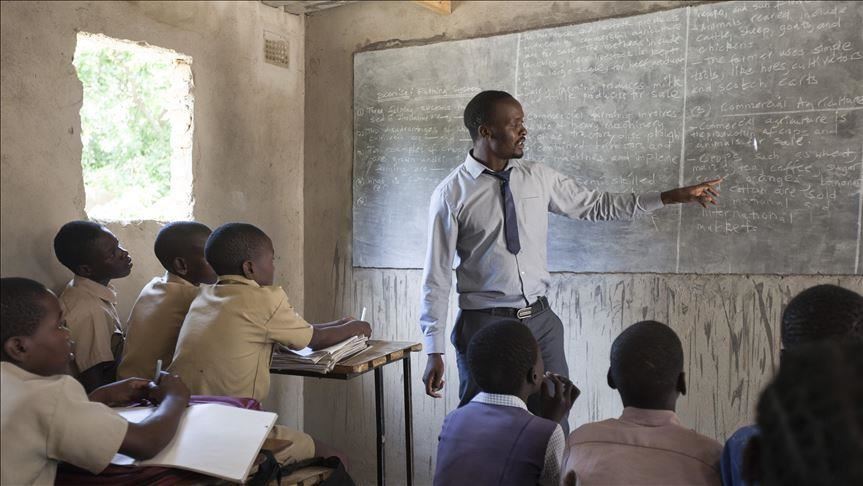By NewZimbabwe
GOVERNMENT has, with immediate effect, scrapped the contentious Continuous Assessment Learning Activities (CALA) and replaced it with new school-based projects of practical applications.
Learners in primary schools will now be offered a maximum of six learning areas instead of a minimum of 27, which they used to do, while Form 1 to 4 learners will have five compulsory learning areas.
Government said it is also ensuring the provision of conducive teaching and learning infrastructure in rural areas, small-scale and commercial farming areas as well as old and new resettlement areas.
Speaking after Tuesday’s Cabinet meeting in Harare, Information, Publicity and Broadcasting Services Minister, Dr Jenfan Muswere, said Cabinet received and approved the Heritage-Based Education 2024-2030 presented by Minister of Higher and Tertiary Education, Innovation, Science and Technology Development, Professor Amon Murwira, as the chairperson of the Cabinet Committee on Human Capital Development, Skills Development and Application.
Noteworthy is that the number of areas covered by the non-examination process has been reduced from about eight to one for each subject.
“Pertinent issues in the learning programmes infrastructure include rationalisation of learning areas and strengthening the school-based continuous assessment.
“At infant level (ECD A to Grade 2), learning areas are being reduced from the previous 11 to six.
“The reduction will also apply at junior level in Grades 3 to 7. At the secondary school level, the core and compulsory learning areas are being reduced from seven to five. An inclusive and integrated approach will be used to cater for learners with special needs, including thorough provision of assistive devices,” Dr Muswere said.
The review of the assessment modalities and tools would entail the rationalisation of CALA activities, now denoted as school-based projects, which emphasise the learner being observed carrying out the practical aspects at school.
It had been envisaged that the identification of pathways would be implemented early when enrolling learners for secondary education to cater for differences in talent and ability.
“Learners at secondary school level will study at least three electives from the following categories: the sciences, languages, humanities, commercials, technical and vocational, and physical education and arts.
“The future of the country will increasingly be shaped by science and technology, hence the bias in the education system to foster critical thinking, innovation, creativity, problem-solving and programming,” said Muswere.
As the learners enrolled for secondary school level, he said, they would be then categorised according to their areas of proficiency.
Central to the delivery of quality learning was the capacitation of teachers since the heritage-based curriculum required a different approach.
“Focus will be placed on in-service teacher training and coaching, using locally available resources.
“The inquiry-based teaching approaches and the methods pillar aims to transform teaching practices from the traditional rote learning, lecture and drill to more learner-centred approaches where pupils have space to develop their creativity, to develop and express their ideas, to collaborate with one another, to learn by doing and thereby experience holistic development,” said Dr Muswere.
As part of employment creation, Muswere said personnel qualified in technical and vocational programmes would be considered for employment as teachers in relevant learning areas.
“This is expected to increase the absorption of post O-Level students in tertiary education institutions in the country and form the foundation of start-ups for enterprising learners. Suitable and appropriate physical and digital infrastructure will be provided,” he said.
Muswere said the government was prioritising the provision of adequate and appropriate infrastructure including classrooms, workshops, laboratories, internet connectivity, technical equipment and teachers’ houses to achieve the intended goals.
“The workshops and laboratories shall be tailor-made according to the unique geographical needs and locally available resources which learners can observe, manipulate and explore during their learning processes. Access to electricity, either from the national grid or renewable sources of energy, will be a priority for every school. This is in order to bridge the gap between the rural and urban schools. The focus will be more on learning by doing,” he said.
Muswere said to actualise the aims of the education system, a review of the legal and regulatory infrastructure would be undertaken.
Heritage-based education would be anchored on the pillars of programmes or learning areas infrastructure, staffing infrastructure, physical and digital infrastructure, legal and regulatory infrastructure and financial infrastructure.
The CALA system had sparked controversy amid calls by most parents for it to be scrapped completely.
Educators were on record saying CALA has increased learning disparities faced by rural pupils as most rural schools lack the infrastructure and resources necessary to administer the contentious curriculum.

